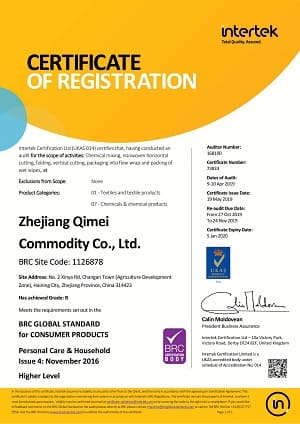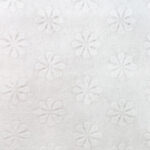Type de tissu tissé Spunlace : polyester, mélange de poly-viscose, fibre de bambou, pâte de bois (jetable dans les toilettes), coton ou fibre de soja (biodégradable)
Plat ou texturé (votre propre LOGO est disponible)
Grammage: 30-80gsm
1/10/30/80/100/120/160 pièces/paquet
The most common size of cosmetic wipes is around 2 inches by 2 inches to 4 inches by 4 inches. This size is convenient for single-use and provides enough surface area to clean and freshen the external genital area. However, some intimate wipes may be smaller or larger than this standard size to cater to specific preferences or needs of consumers.
1. Sac refermable en plastique : Il s'agit du type d'emballage de lingettes humides le plus courant. Il est fait de plastique et possède une bande refermable sur le dessus pour garder les lingettes fraîches et humides.
2. Conteneur à couvercle rabattable : Ce type d'emballage consiste en un contenant en plastique avec un couvercle rabattable qui peut être ouvert et fermé pour accéder aux lingettes.
3. Emballage souple avec couvercle rabattable en plastique : Semblable au récipient à couvercle rabattable, cet emballage est livré dans un emballage souple et possède un couvercle rabattable en plastique pour un accès facile.
4. Distributeur pop-up : Ce type d'emballage est doté d'un mécanisme de distribution pop-up qui sort une lingette à la fois.
5. Pack de voyage : Un petit emballage conçu pour une utilisation en déplacement, il est souvent livré avec une fermeture à pression en plastique.
6. Emballage à usage unique : ces lingettes humides sont présentées dans de petits paquets scellés, pratiques pour les voyages ou les activités de plein air.
7. Sac de recharge : cet emballage de plus grande taille est conçu pour remplir d'autres contenants de lingettes humides et a généralement une ouverture refermable.
Water: Water is typically the main ingredient in cosmetic wipes, as it serves as a solvent to dissolve and remove dirt, makeup, and other debris from the skin.
Surfactants: Surfactants are compounds that reduce the surface tension of water and help it to spread more evenly over surfaces. They can be used in cosmetic wipes to help remove dirt and grease from the skin.
Emollients: Emollients are ingredients that help to moisturize and soothe the skin. They may be added to cosmetic wipes to help prevent dryness or irritation.
Preservatives: Preservatives may be added to cosmetic wipes to prevent the growth of bacteria, mold, and other microorganisms that can cause the wipes to spoil or lose their effectiveness.
Fragrances: Fragrances may be added to cosmetic wipes to give them a pleasant scent and improve the overall user experience.
Other ingredients: Depending on the intended use of the product, other ingredients such as vitamins, plant extracts, or sunscreen agents may be added to cosmetic wipes to provide additional benefits to the skin.
Good Manufacturing Practice (GMP): GMP is a set of guidelines that ensure that products are consistently produced and controlled according to quality standards. Compliance with GMP is usually required for products that are intended for human use, including cosmetic wipes.
ISO 9001: This is a quality management system certification that sets standards for the design, production, and delivery of products. It is often required for businesses that supply products to other companies.
ISO 22716: This certification is specific to the cosmetics industry, and sets standards for the production, control, storage, and shipment of cosmetic products.
Oeko-Tex Standard 100: This certification sets standards for the safety and environmental impact of textile products. It may be relevant for cosmetic wipes that are made from textile materials.
FDA Registration: In the United States, manufacturers of cosmetic products are required to register their facilities with the U.S. Food and Drug Administration (FDA).












